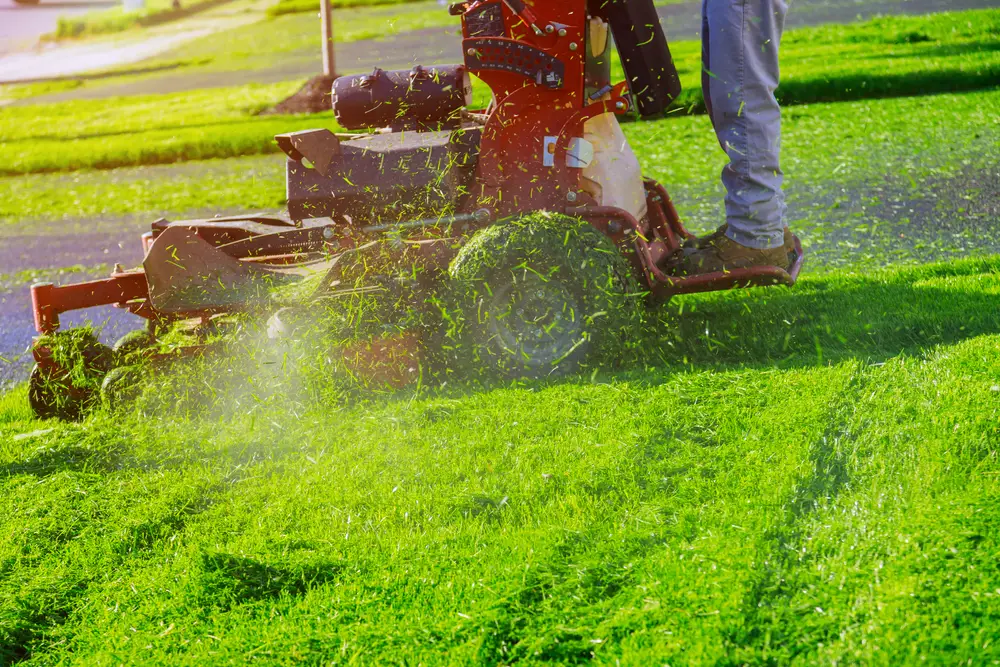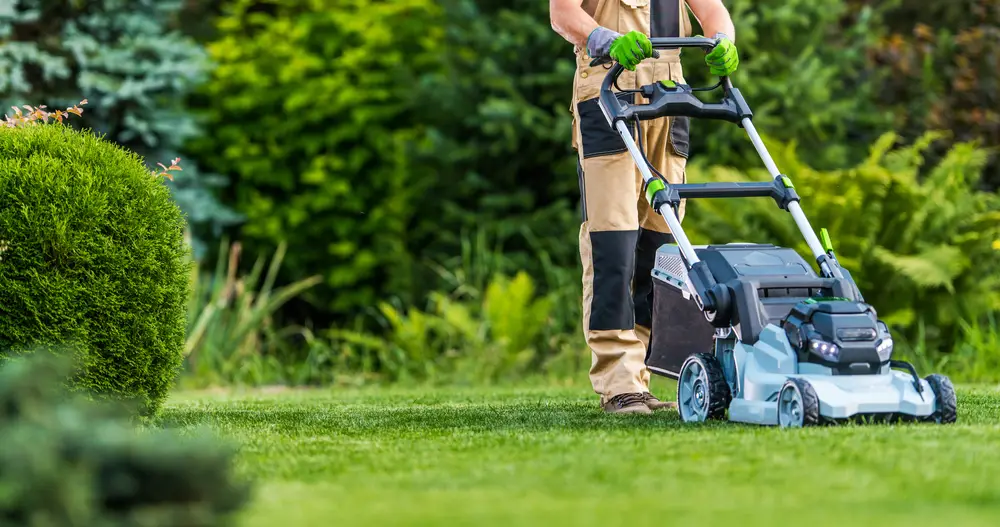In this content you’ll learn:
Key Takeaways
- Cutting grass can trigger asthma.
- Solutions to prevent this include:
- Taking medication
- Wearing a mask
- Using a grass bagger
- Mowing regularly and in the evening
- Showering after mowing
- And knowing when to stop
- If none of the above works, enlist the help of a friend, family member, or professional.
Asthma is a respiratory condition that causes symptoms such as shortness of breath, wheezing, coughing, and a tight feeling in the chest. I have suffered from asthma since I was around two years old, and knowing my triggers is one of the ways I manage my condition. The same may be true for you, but is cutting grass a possible asthma trigger?
Can Cutting Grass Trigger Asthma?

Cutting grass can trigger asthma. When you cut grass, all sorts of particles will fly up, and you’ll breathe them in. Things like dust and pollen are the main culprits, but studies have shown there is also a link between mold spores in the grass and allergies (which can trigger asthma).
Should You Cut Grass If You Have Asthma?
I find I don’t have too many problems cutting the grass even though I’m asthmatic. The condition’s intensity and what triggers it can vary from person to person, though.
This is why it’s essential to know what sets your symptoms off (talking with your doctor helps with this). That way, you can do your best to avoid these triggers.
If you know grass pollen will worsen your asthma, it’s probably not a good idea to go outside and mow the lawn. Of course, you may not be able to help this. But there are steps you can take to stay safe.
7 Ways To Stay Safe When Cutting The Grass With Asthma

Preparing yourself before cutting the grass with asthma will save you a lot of trouble. No amount of preparation will completely eradicate your symptoms. However, doing the below steps will make cutting the grass easier and safer for you.
Make Sure You Take Your Medication Properly
I did not take my asthma seriously during my teens and early twenties. Gone were the days my parents administered my medication, and I had more important things to do than worry about taking my inhalers.
How wrong I was! My asthma had never been worse, and it wasn’t until I got a little older and realized the importance of proper medication management that I got my asthma more under control.
If you know cutting grass triggers your asthma, then it’s vital you take your medication as prescribed by your doctor. If you find the medication isn’t enough, continue working with your doctor on a solution.
For many years I was taking a Becotide preventer inhaler, but my symptoms just couldn’t be managed. There’s no way I would have been able to cut the grass without wheezing. However, after quite a severe asthma attack, my doctor changed my preventer (I now use a FostAir inhaler), and you wouldn’t even know I was a sufferer. Cutting grass and other previous triggers are a thing of the past.
Wear A Face Mask
Even if your medication works, it’s worth taking additional precautions to stop breathing in the triggering and harmful particles cutting grass can release.
A mask is one such precaution. Thankfully, many different types are readily available, such as:
- 3M Particular Respirator 8511
- RZ Mask M2 Reusable Mask
- AirGearPro G-500 Reusable Respirator Mask
- KN95 Mask
The more you invest in a mask, the more protection it will give you.
The only problem with this kind of gear is it can feel uncomfortable, especially when the weather is hot. So, taking breaks and catching your breath where you need to is essential.
Choose A Lawn Mower With A Bagging System
Most modern lawn mowers come with a cut-and-collect system, also known as a bagging system. Your lawn mower may already have one. If not, getting one will help with your asthma when cutting the lawn.
The grass bagger (catcher) collects most of the clippings when you mow the lawn, meaning less gets into the air. Afterward, you can reuse them as fertilizer or mulch.
Keep A Good Mowing Schedule To Reduce Pollen
It might sound a little counterproductive for me to tell you to mow your lawn more frequently if you have asthma. But doing this stops the lawn from producing as much pollen.
If you let your grass grow too long, the plant will begin to flower and produce pollen.
Mowing more frequently (around once a week) and setting the correct mowing height will prevent this.
Mow During The Evening
Talking about pollen, it’s crucial to think about when the pollen count is at its highest. Grass pollen is at its highest during the morning as this plant is known to release its pollen from around 7.30 A.M.
The further from this time that you can mow the lawn, the better, so mowing in the early evening is often the best option.
However, I would advise you don’t mow too late, as mowing in the dark can be dangerous. What’s more, if you fire up the lawn mower at 10 P.M., I don’t think your neighbors will thank you for it!
Shower After Mowing
You might have gotten away with not experiencing any asthma symptoms while mowing the lawn, but there’s a high chance that your clothing and skin will be covered in pollen and particles.
To avoid being continuously exposed to these asthma triggers, taking a shower directly after you finish mowing is a good idea.
I’d also recommend putting your clothes through the washing machine. It’s even a good idea to have a dedicated lawn-mowing outfit so the particles don’t contaminate your other clothes.
Know When To Stop
As someone who has suffered from asthma for almost four decades, I’ve had to learn the hard way many times.
While I agree we shouldn’t let our condition stop us from living our lives, we do have to know when to stop.
If you want to try cutting the grass, then there’s no reason why you shouldn’t. But if it’s not working and continues to trigger your asthma, there’s nothing wrong with stopping.
The last thing you want to do is land yourself in the hospital and let’s face it, if you’re prescribed those pink soluble tablets (prednisolone), you’ll have to drink that nasty solution. I don’t know about you, but I’ll do anything to avoid that.
So, if mowing your lawn continues to be an issue, it’s time to let someone else take over.
If All Else Fails, Enlist The Help Of Someone Else
If you have a willing friend or family member who can cut the grass for you, take them up on their offer. You can always return the favor in other ways; perhaps make them lunch after they finish working.
However, some people may not have this luxury, but there are always professional grass-cutting services you can also use. What’s more, these services aren’t usually too expensive, and spending a little money is better than putting your health at risk.
